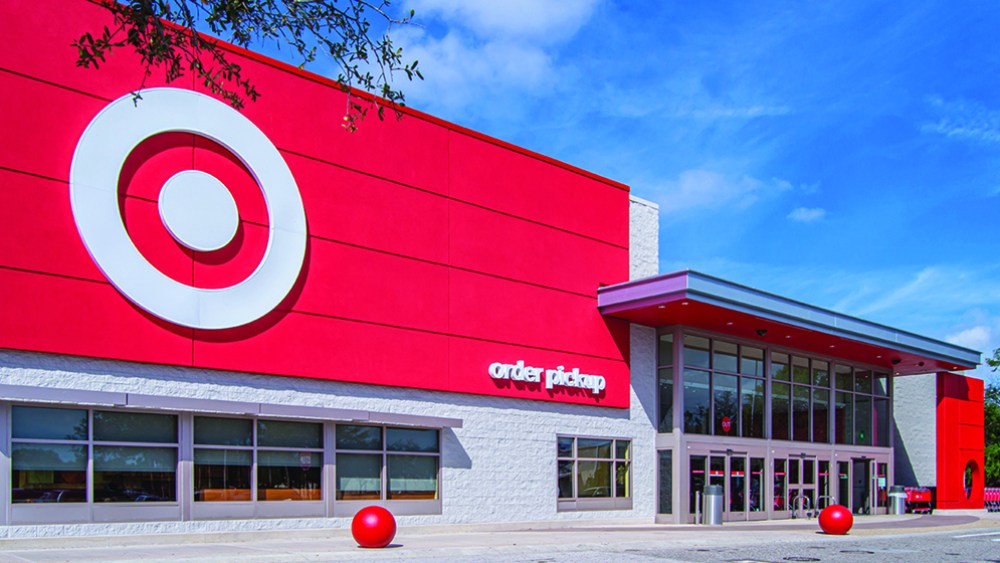Target Corp. came up short in the third quarter, with continued weakness in discretionary goods and costs to prepare for what was ultimately a short dock strike weighing on the bottom line.
Third-quarter profits fell 12.1 percent to $854 million, or $1.85 a diluted share, from $971 million, or $2.10 a year earlier.
That put earning per share 45 cents below the $2.30 analysts forecast, according to Yahoo Finance.
Revenues for the quarter ended Nov. 2 rose 1.1 percent to $26.7 billion from $25.4 billion.
Comparable sales increased 0.3 percent — a result that contrasted unfavorably with longtime retail rival Walmart Inc., which reported a 5.3 percent comp gain for its U.S. discount business in the quarter, excluding fuel.
But where Walmart pointed to “broad-based strength across merchandise categories,” Target’s performance was weaker and uneven.
There were bright spots. Target’s comp growth was supported by a 2.4 percent gain in customer traffic and 10.8 percent increase in digital comp sales. Beauty comparable sales were the standout with a better than 6 percent gain. But store comps fell by 1.9 percent.
Throughout the year, Target has faced a consumer that it characterized as resilient, but very much on a budget — and that trend held through the third quarter.
Brian Cornell, chair and chief executive officer of Target, told reporters on a conference call that shoppers are “being very patient, shopping for promos, looking for great value on those essential items that they need for their pantry, and they’re shopping very conservatively.
“We’ve seen pressure and discretionary categories all year long in the entire industry, whether it’s apparel or home or hard lines, and those [trends] continued in Q3,” Cornell said.
Brian Cornell
Courtesy
In apparel, consumers took to Target’s performance and young contemporary offering, although sales of cold-weather apparel were soft due to warmer weather across the country. Halloween goods and sporting goods have also clicked with consumers.
“So there are green shoots,” Cornell said. “But overall we’re still seeing consumers shop very cautiously in discretionary categories and we’re planning accordingly.”
Target’s bottom line also took a supply chain hit, as the company got a head start on bringing in inventory ahead of the East Coast port strike last month.
While there was a strike that tangled up supply chains, it lasted only three days.
“Our team took decisive actions to protect Q3 in stocks and ensure we had Q4 inventory for the biggest season of the year,” Cornell said. “We don’t regret those actions, but with the impact of softer-than-expected sales in discretionary, these actions temporarily raised our inventory levels and drove higher-than-expected costs in our supply chain.”
As of the end of the quarter, Target’s inventories were up 2.9 percent from a year earlier.
While the move was clearly costly, it is not expected to leave a big overhang.
“We feel very good about our inventory position going into the quarter,” Cornell said. “We think we’ve got the right blend of seasonally relevant items, exclusive items to Target and all the things that are going to bring the joy to the consumer during the holiday season.”
While Target is still working on getting its bottom-line mojo back and to connect on discretionary purchases, the company is still drawing shoppers.
Cornell said the increase in traffic equated to “10 million incremental transactions” for the quarter.
“We’re driving more footsteps to our stores and visits to our site,” Cornell said. “We’re really happy with the way that guest is responding to our same-day services through Target Circle 360 and Drive Up [pick up] just continues to be a really standout performer for us. We’re seeing the traffic, but it is a consumer who’s shopping cautiously.
“As we look to the holidays and beyond, we remain confident in the underlying strength and fundamentals of our business and our ability to deliver on our longer-term financial goals,” Cornell said.
In the meantime, the company is tempering expectations some.
For the full year, Target is now projecting earnings per share of $8.30 to $8.90, down from the $9.00 to $9.70 the company forecast in August.

